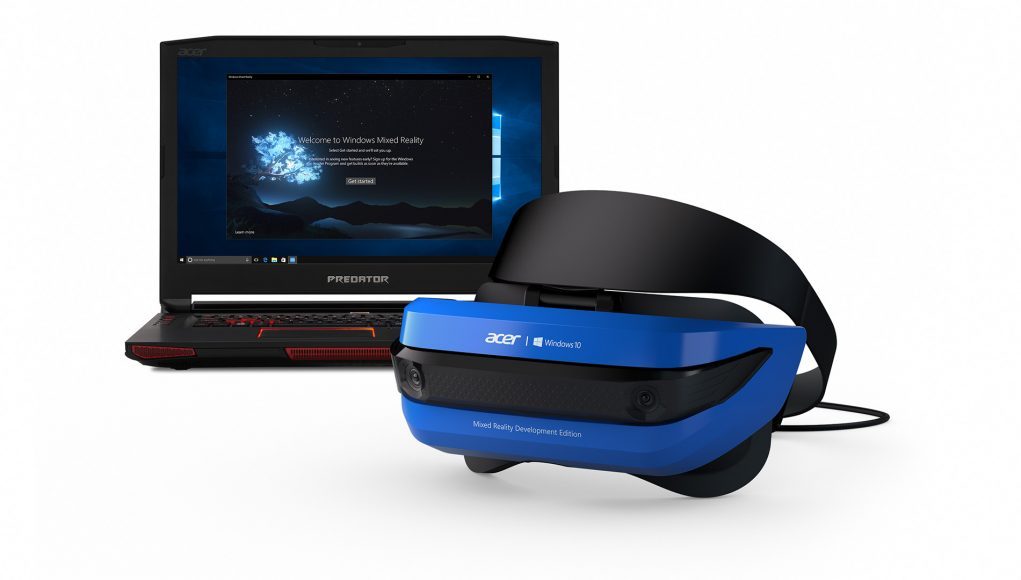The Acer Windows Mixed Reality Development Edition headset is shipping this month, the first HMD to include the inside-out tracking technology pioneered on the HoloLens. This marks the beginning of the rollout of Microsoft-endorsed VR headsets that support ‘world scale’ tracking and ‘mixed reality’ apps.
Originally announced at Microsoft’s keynote in October 2016, VR headsets with inside-out tracking from HP, Dell, Lenovo, ASUS, and Acer (with another from 3Glasses revealed in December), are due to launch later this year. The rollout of the developer kit begins this month in the form of the ‘Acer Windows Mixed Reality Development Edition headset’.
Microsoft insist on using the term ‘mixed reality’, despite the new headsets being much like any other VR headset, but using inside-out tracking. The Acer unit uses two 90Hz 1440×1440 panels – totally opaque, unlike Microsoft’s HoloLens, which has a transparent visor to overlay images over the real world. Gesture tracking, another key pillar of the HoloLens experience, is also missing from the Acer HMD. The ‘mixed reality’ delivered by the Acer headset is defined by the inside-out tracking system, which provides positional tracking without the need for external sensors, as well as being able to outline real-world objects so that you don’t walk into them, and ability to access the Windows Holographic environment.
The devkit will include access to Windows 10 Insider preview builds and the SDK to enable developers to build mixed reality applications. Announced at GDC 2017 and via the Windows Blog, Microsoft has broad plans beyond the Windows desktop and HoloLens, bringing mixed reality content to the Xbox One family of devices, including Project Scorpio, in 2018.







